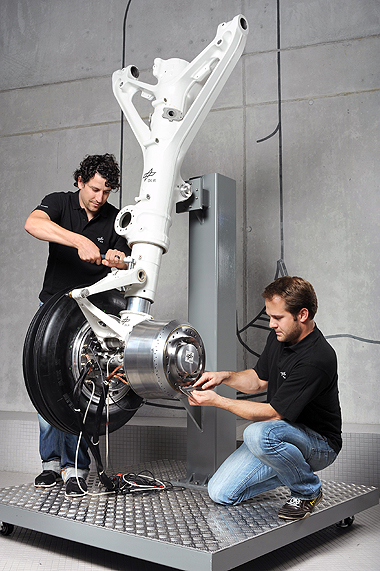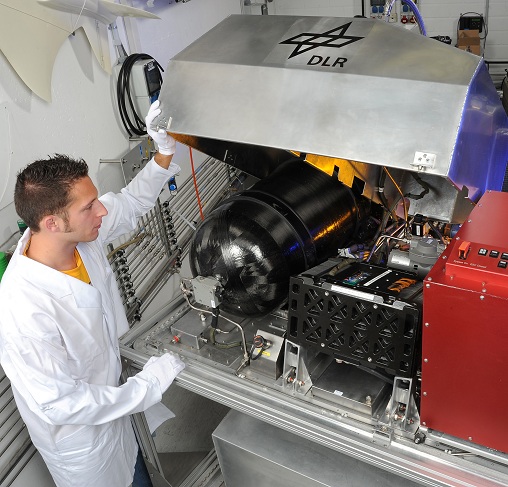With speculation in CAFE circles about the use of thin, lightweight motors now available for landing and takeoff augmentation, it comes as almost now surprise that DLR, the German Aerospace Centre, and the Airbus people at EADS have announced development of an electric nose wheel that could replace airport tugs and extended ground operation for airliners’ jet engines.
According to The Engineer, a British publication, a fuel cell-powered system delivers electrical energy capable of powering the nose wheel of a 70-ton aircraft.
“Commercial aircraft could cut their on-ground emissions by one quarter with a new hydrogen fuel-cell propulsion system, according to its creators.
“For short-haul aircraft that often take off and land seven times a day, this could save between 200 and 400 litres of kerosene per day while reducing noise by around 95 per cent, without the use of towing vehicles.”
Tested in the DLR laboratories, the twin electric motors are about to be checked out on a real A320. The system uses a low-temperature polymer electrolyte fuel cell, and allows “the pilot to turn off the main engines one minute after landing and not turn them on until three to five minutes before take-off, in order to heat them up. This means the engines could be used 1,200 hours less per year.”
DLR’s press release further notes, “’With the fuel cell-powered electric nose wheel can save up to 27 percent of produced emissions at the airport and up to almost 100 percent of the noise during the rolling process,’ said Dr. Josef Kallo, the DLR Institute for Technical Thermodynamics project manager responsible for the zero-emission [system] with fuel cells.”
Kallo explains that the system requires some re-engineering of the nose gear, removing existing hydraulics to make room and save weight for the “very compact” motors. As he told The Engineer, “Just to get 3-5 kilometers per hour (1.9-3.2 miles per hour) you have to work against something like 5,000-7,000 Newton meters (3,700-5,200 foot pounds). All that effort exerted several times daily for the typical mid-size airliner would require refueling “every one or two days,” according to Kallo.
DLR analyzed electric cars to find a lightweight power solution and looked at electric trains for a way to generate the necessary torque. Ground tests on a Lufthansa test vehicle will start in April, with the development of an associated fuel cell system for aircraft climate control and other electrical systems to follow.


